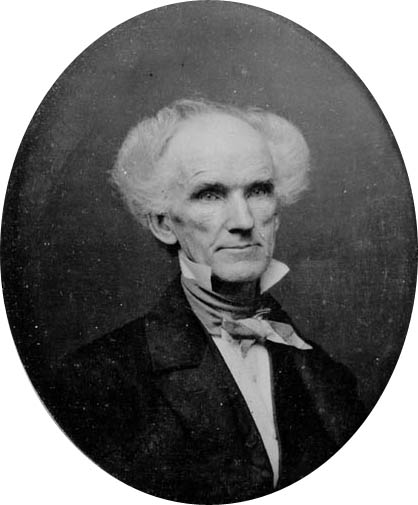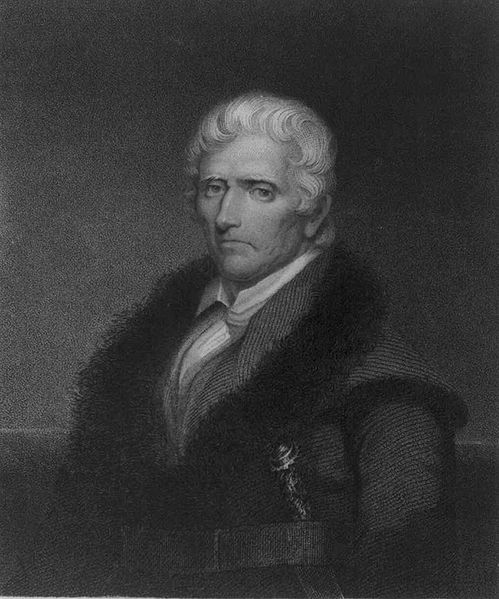<Back to Index>
- Physician Christiaan Eijkman, 1858
- Engraver James Burton Longacre, 1794
- Governor of Quebec Frederick Haldimand, 1718
PAGE SPONSOR

James Barton Longacre (August 11, 1794 – January 1, 1869) was an American engraver, who was the fourth Chief Engraver of the United States Mint from 1844 until his death. He succeeded Christian Gobrecht in the position as Chief Engraver upon Gobrecht's death. Longacre is probably best known for designing the Indian Head Cent, but was also responsible for the designs of the Shield Nickel, Flying Eagle cent, Two-Cent piece, silver and nickel three-cent pieces, One dollar gold, a $3 gold piece, and the first $20 or double eagle. From 1833 - 1839, Longacre and James Herring published The National Portrait Gallery of Distinguished Americans, which presented portraits and biographical sketches. Born on a farm in Delaware County, Pennsylvania,
Longacre left home at the age of 12, seeking work in the nearby city of
Philadelphia. He apprenticed himself at a bookstore, but the bookstore
owner, John E. Watson, soon recognized his skills as a portraitist. He
arranged for Longacre to serve an apprenticeship with engraver George
Murray, so that the young Longacre could hone his artistic skills. In
1819, Longacre established his own firm, specializing in the engraving
of portraits. His first important commission was for S.F. Bradford's Encyclopedia. His engraving of Andrew Jackson (from a painting by Thomas Sully), sold widely. Another important early work was Longacre's illustrations for John Sanderson's nine volume Biographies of the Signers of the Declaration of Independence. Around 1830, he began, in partnership with John Herring, to compile their American Portrait Gallery which was later called National Portrait Gallery of Distinguished Americans. Between 1830 and 1839, he formed partnerships with other engravers to prepare banknote plates and other engravings of metal. The death of Christian Gobrecht in July 1844 left the United States Mint temporarily without an engraver. Through the influence of Senator John C. Calhoun of South Carolina, Longacre secured the appointment. Mint director Robert M. Patterson and chief coiner Franklin Peale disliked Longacre's work. The officers of the Mint were Patterson's friends and relatives, who excluded Longacre socially. When Peale objected to Longacre's design for the 1849 double eagle,
he and Patterson alleged that while Longacre was an excellent portrait
engraver, he was incompetent as a coin engraver. While their claims
gained some currency at the time, in the 1950s, numismatic historian Walter Breen exonerated him. In 1850, Patterson tried to offer Longacre's position to Charles Cushing Wright, but was unable to secure Longacre's dismissal. In 1854, Patterson's successor as Mint director, James Ross Snowden,
fired Peale, who was using Mint facilities for private purposes. These
changes of personnel relieved much of the pressure on Longacre. During
his quarter century as chief engraver, Longacre designed a large number
of new United States coins. His works included the twenty dollar gold
piece, the gold dollar, the three dollar piece, the Flying eagle and Indian head cents. He also designed the Shield nickel, two cent piece and both the silver and nickel three cent piece. As a private contractor, he designed the Chilean coin series of 1867. He died in office on January 1, 1869. Longacre's
work survived on American coinage until 1909, when the Indian head cent
was replaced by the Lincoln cent. In 1928, Longacre was recognized in
an exhibit of 100 notable American engravers sponsored by the New York
Public Library.
